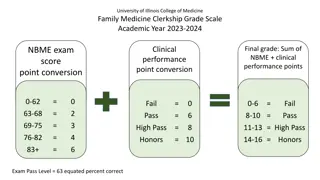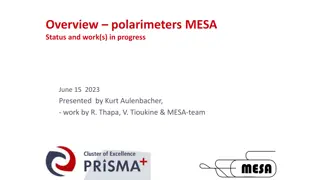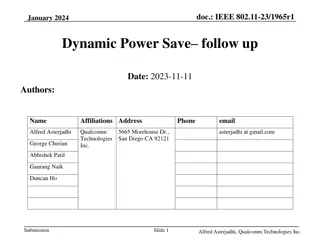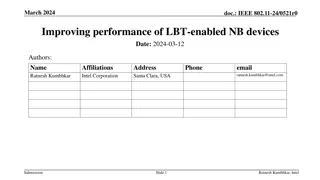Understanding Vernier Scales and Precision Measurement Devices
Vernier scales, named after French cartographer Pierre Vernier, enhance precision in measuring even the smallest scale divisions. Instruments like the theodolite, slide calipers, and Fortin's barometer utilize vernier scales for accurate readings. Learn about key terms like least count and vernier constant, along with construction techniques for implementing a vernier scale. Master the art of measuring fractional parts with high accuracy using this essential tool.
Download Presentation
Please find below an Image/Link to download the presentation.
The content on the website is provided AS IS for your information and personal use only. It may not be sold, licensed, or shared on other websites without obtaining consent from the author. Download presentation by click this link. If you encounter any issues during the download, it is possible that the publisher has removed the file from their server.
Presentation Transcript
A vernier scale, named after French Cartographer Pierre Vernier is a visual aid by which even the fractional parts of the smallest divisions of the main scale can be measured with the highest precision. It consists of a small auxiliary scale called the vernier which moves freely with its graduated edge along a long fixed scale called the main or primary scale. Many instruments used by geographers, geologists, physicists have this device instruments, such as, Theodolite, Slide Calipers, Fortin s Barometer, Brunton Compass etc. attached to the Students of Geography are trained to construct the graphical method of marking this tool.
The vernier carries an index mark that forms the zero of the vernier divisions and is denoted by an arrow mark. The scale may be drawn as a straight linear graph or as an arc. The device is based upon the fact that it is easier to see the exact coincidence of two lines than to judge the distance between the two lines and is used in precision instruments.
Key Terms Least Count The value, linear or angular, of one smallest main scale division is called the least count (d) of the main scale. Vernier Constant The difference between the values of one smallest main scale division and one smallest vernier scale division is defined as the Vernier Constant (VC).
Construction of a Vernier Scale Break up the reading to find the values of the main scale and the vernier component. Calculate the VC from the given problem and find the number of VDs that coincides with any of the MSD. First, draw a plain scale with a suitable number of primary and secondary divisions. Based on the relations of the vernier and main scale, divide the MSD-length into the required number of VDs (x). Take, on a screw-fitted divider, the length corresponding to the distance covered by the coinciding VD. Place one end of the divider on the MSR-mark and slide it along the main scale until the other end coincides with a MSD. Now, mark the position of the left end of the divider on the main scale. Starting from this point, draw vernier divisions (x) using a paper strip.

















































